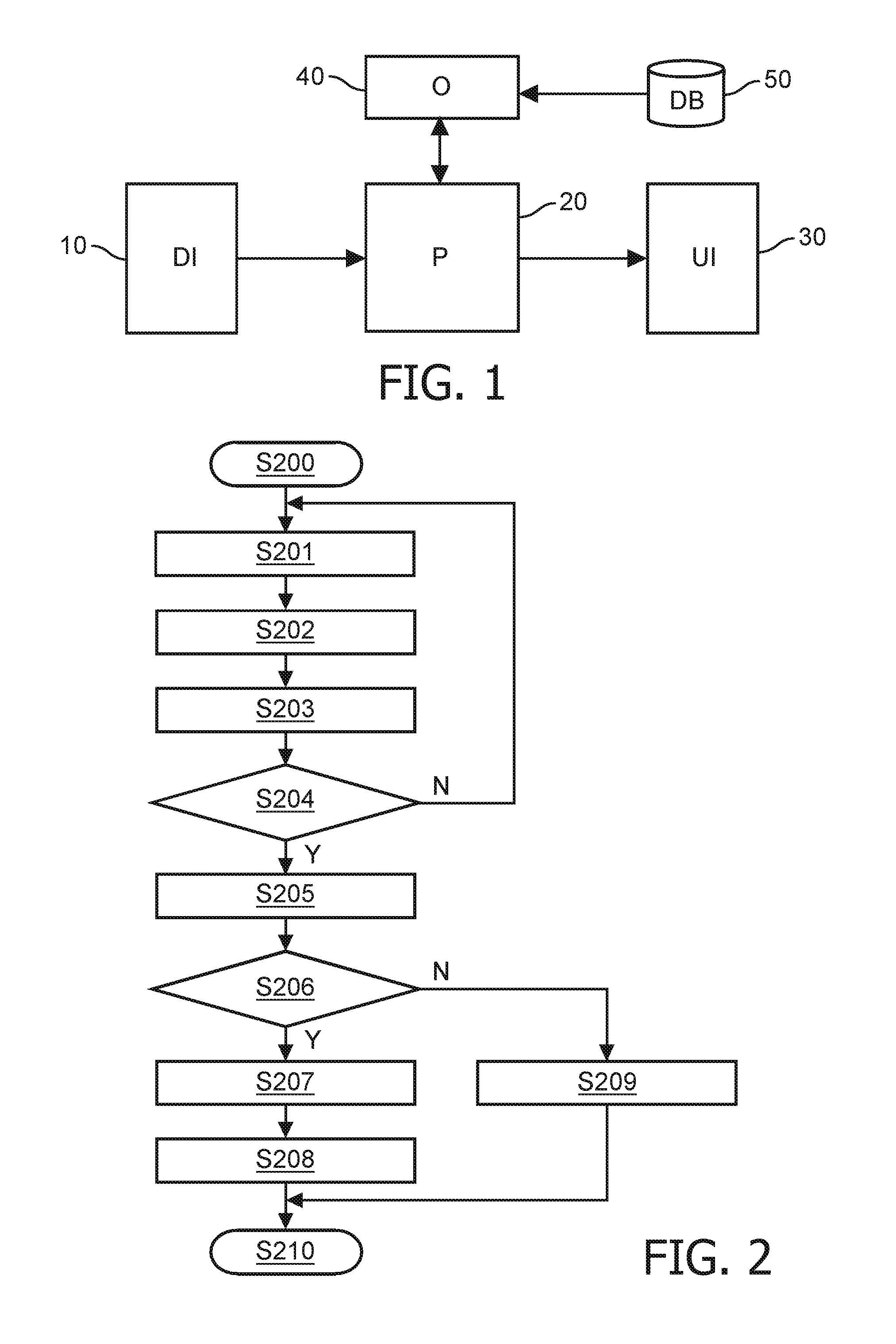Combined use of clinical risk factors and molecular markers fro thrombosis for clinical decision support
a clinical risk factor and molecular marker technology, applied in the field of clinical decision support, can solve the problems of requiring a significant effort of machine learning and data driven approaches, and achieve the effect of increasing the accuracy of person specific thrombosis risk estimation
- Summary
- Abstract
- Description
- Claims
- Application Information
AI Technical Summary
Benefits of technology
Problems solved by technology
Method used
Image
Examples
first embodiment
[0042]FIG. 2 shows a flow diagram of a thrombosis risk estimation process according to a After the start of the procedure in step S200, the data interface 10 accesses in step S201 the hospitals electronic patient record (EPR), if present, and reads out the nine patient features that were listed above. Optionally, the user may be requested or allowed to manually enter, e.g. via the user interface 30, numerical values for patient features that are not available from the EPR. Then, in step S202, the data interface 10 checks the entered values for the right numerical format and an error message can be generated if the input format does not match with the required format. In case of a wrong format, the data is converted in step S203 to the numerical formats indicated in the above list, if necessary. Additionally, the user interface 30 may allow the user either to enter a numerical value for the threshold T between zero and one, or to disable the threshold.
[0043]Then, in step S204, the p...
second embodiment
[0046]In the following, an optimization of the clinical decision support algorithm is described based on a
[0047]The required data set of the database 50 may be derived from a data collection based on an extensive questionnaire on many potential risk factors for venous thrombosis. More specifically, the data collection may involve information (e.g. clinical risk factors) obtained from a questionnaire and clinical assays (e.g. activity or antigen-based assays of protein concentrations) as described in the respective assay protocols.
[0048]Machine learning methods are black box methods that exploit the patterns that may be hidden in the numerical values of the data to predict an output. Each method constructs a mathematical function that takes observed quantities (like protein concentrations) and qualities (like immobilization) as inputs, and produces an output that predicts a certain desired feature. Such a function is defined through its structure (e.g. a neural network function) and ...
PUM
 Login to View More
Login to View More Abstract
Description
Claims
Application Information
 Login to View More
Login to View More - R&D
- Intellectual Property
- Life Sciences
- Materials
- Tech Scout
- Unparalleled Data Quality
- Higher Quality Content
- 60% Fewer Hallucinations
Browse by: Latest US Patents, China's latest patents, Technical Efficacy Thesaurus, Application Domain, Technology Topic, Popular Technical Reports.
© 2025 PatSnap. All rights reserved.Legal|Privacy policy|Modern Slavery Act Transparency Statement|Sitemap|About US| Contact US: help@patsnap.com



